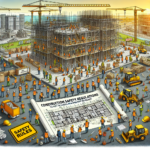From Sketch to Screen: The Evolution of Photorealistic Rendering in Entertainment and Beyond
The field of computer graphics has undergone a remarkable evolution over the past few decades, allowing artists and designers to create stunningly realistic images and animations that were once impossible to achieve. One of the key advancements in this field has been the development of photorealistic rendering techniques, which enable computer-generated imagery to closely resemble real-world objects and environments. From the early days of simple wireframe models to the sophisticated rendering techniques used in today’s blockbuster films and video games, the journey from sketch to screen has been nothing short of extraordinary.
In the early days of computer graphics, artists had limited tools and technology at their disposal to create realistic images. Simple wireframe models, which represented objects and characters as a series of connected lines, were the norm. These models lacked texture and detail, resulting in images that were flat and unconvincing. However, as technology advanced, rendering techniques improved, allowing artists to create more detailed and realistic images. The advent of techniques such as ray tracing and global illumination revolutionized the field of computer graphics, enabling artists to simulate the behavior of light in a scene with unprecedented accuracy.
The development of photorealistic rendering techniques has had a profound impact on the entertainment industry, revolutionizing the way films, television shows, and video games are created. Today, photorealistic rendering is used to create stunning visual effects, lifelike characters, and immersive environments that would have been impossible to achieve with traditional methods. From the breathtaking landscapes of animated films like “Frozen” to the hyper-realistic character models of video games like “The Last of Us”, photorealistic rendering has become an essential tool for bringing digital worlds to life.
Beyond the entertainment industry, photorealistic rendering has also found applications in fields such as architecture, product design, and scientific visualization. Architects use photorealistic rendering to create realistic visualizations of building designs, allowing clients to visualize the final product before construction begins. Product designers use rendering techniques to create lifelike prototypes of new products, helping to streamline the design process and reduce costs. In scientific visualization, photorealistic rendering is used to create accurate representations of complex data sets, enabling researchers to gain new insights into the natural world.
The future of photorealistic rendering looks brighter than ever, with advancements in technology continuing to push the boundaries of what is possible. Real-time rendering techniques, which allow for instant feedback and interaction with virtual environments, are becoming increasingly common in the entertainment industry. Virtual reality and augmented reality technologies are also driving demand for photorealistic rendering, as users expect immersive and realistic experiences in their digital environments. As these technologies continue to evolve, the line between the digital and physical worlds will blur even further, opening up new possibilities for creative expression and innovation.
In conclusion, the evolution of photorealistic rendering has transformed the field of computer graphics, enabling artists and designers to create stunningly realistic images and animations that were once unimaginable. From the early days of wireframe models to the sophisticated rendering techniques used in today’s blockbuster films and video games, the journey from sketch to screen has been a remarkable one. As technology continues to advance, the future of photorealistic rendering looks promising, with new possibilities for creative expression and innovation on the horizon. With photorealistic rendering, the only limit is the artist’s imagination.


